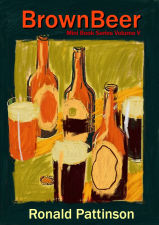A question which comes up quite often is: how can we brew a top-fermenting beer with the attributes if a Lager?
It has often been alleged that top-fermentation beers are, as a rule, very deficient of the sparkling brilliancy of the well-brewed lager, and that apart from any considerations of flavour, the bottom-fermentation beer possesses such a distinctly attractive appearance that comparison with ordinary English beers is altogether in its favour. There is no doubt a considerable substratum of truth in this, and, indeed, so much so that one cannot wonder at the want of appreciation of top-fermentation beers as displayed by our continental cousins. In Germany, for instance, this sort of beer has made no progress at all in the estimation of consumers, and a good deal of this want of success is attributable to the appearance of the beer. The splendid beers brewed at famous centres like Munich, Pilsen, Berlin, Bremen, and other towns are well calculated to hold their own, not only for their inherent qualities of flavour and purity, but also for the delightful appearance they present m the mugs and glasses as used on the continent.
The Brewers' Journal vol. 35 1899, August 15th 1899, pages 484 - 485.
Brilliant, highly-carbonated Lager looked very pretty in the glass. How could dull, old top-fermenting beer compete with that? Well, UK brewers tried to achieve this with their skill.
English brewers, however, have no special reasons to fear an invasion of lager beer, to any disturbing extent, but, at the same time, they strive with all diligence to attain to the manufacture of brilliant and sparkling ales. Brillancy allied with flatness is not difficult to attain, but brillancy and sparkling condition are the goal of every brewer.
The Brewers' Journal vol. 35 1899, August 15th 1899, pages 484 - 485.
It seems that a German brewer had a more technical solution.
Quite recently a German brewer, by name Schanderl, has described a process by which it is claimed top-fermentation beers may be brewed equally attractive in appearance to the lager. The process aims at applying the methods of bottom fermentation in large casks to top fermentation beers. The primary fermentation is conducted in the ordinary manner, at the termination of which the beer is let down into lager casks. To this is added a considerable quantity of “ krausen ” or yeast priming, and the lager casks are closed. The consequence is evolution of carbonic acid gas to a large extent, and since it cannot escape the beer becomes thoroughly impregnated with this gas. As much pressure is exerted, Schanderl advocates the use of metal casks, fitted with funnel-shaped bottoms, so that the removal of the large yeast deposit is facilitated. The quantity of yeast formed must be considerable, and of course this should be carefully excluded from trade casks, to which the beer is transferred without loss of pressure. It is said that beers thus fermented reach the customer in a highly sparkling condition, and certainly the scheme sounds well enough. Whether it is good in practice we cannot judge, but the experiment should certainly be tried in establishments where time and opportunity allow of such like investigations. There is no question that beers naturally impregnated with gas are superior in flavour to those artificially supplied, and this holds good in marked degree with bottled ales.
The Brewers' Journal vol. 35 1899, August 15th 1899, pages 484 - 485.
What's being described is clearly Obergäriges Lagerbier: stuff like Alt or Kölsch. Beers which, after an initial warm fermentation, are cold stored like a Lager. Did this experiment work? Given that Alt and Kölsch are still around, I'd say yes.
As a loyal CAMRA member, I'm gratified to see confirmation that natural carbonation is best.











































































2 comments:
If they couldn't achieve a beer that was both clear and well conditioned, it sounds like the beer was still sitting on a thick layer of trub even in the serving cask. And/or that beer in Britain was often served very flat.
It's fairly easy to transfer lager to a serving cask because it's done at near freezing temperature and the CO2 remains dissolved in the beer. If you re-rack cellar temperature beer it'll foam all over the place, so bright beer is often lacking in carbonation.
Another issue was how bitter and strong beer was from the UK and Crown Dependancies.
Oscar
Post a Comment